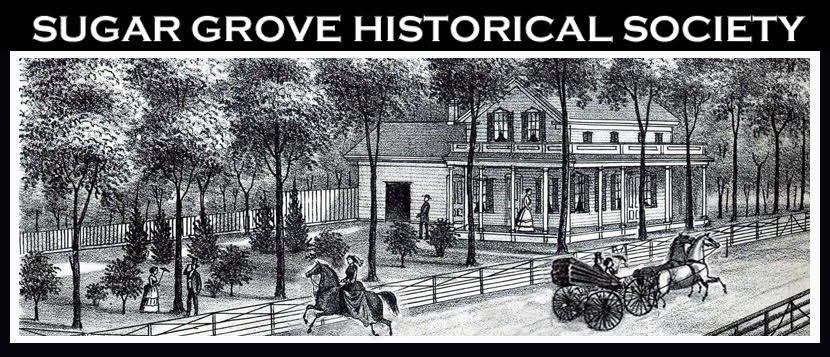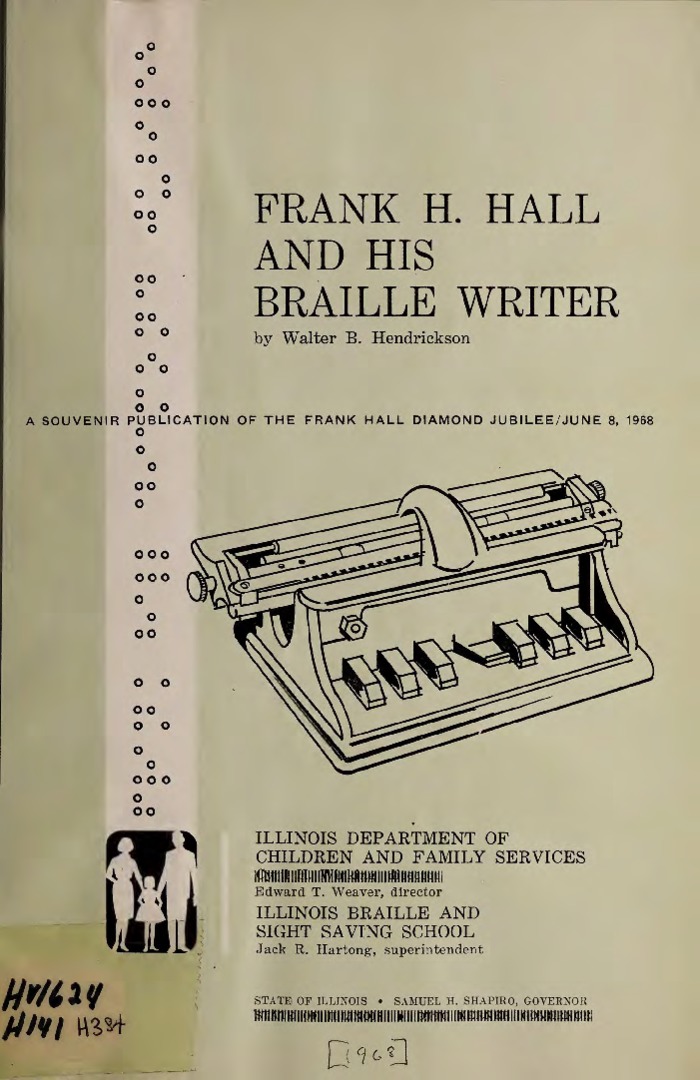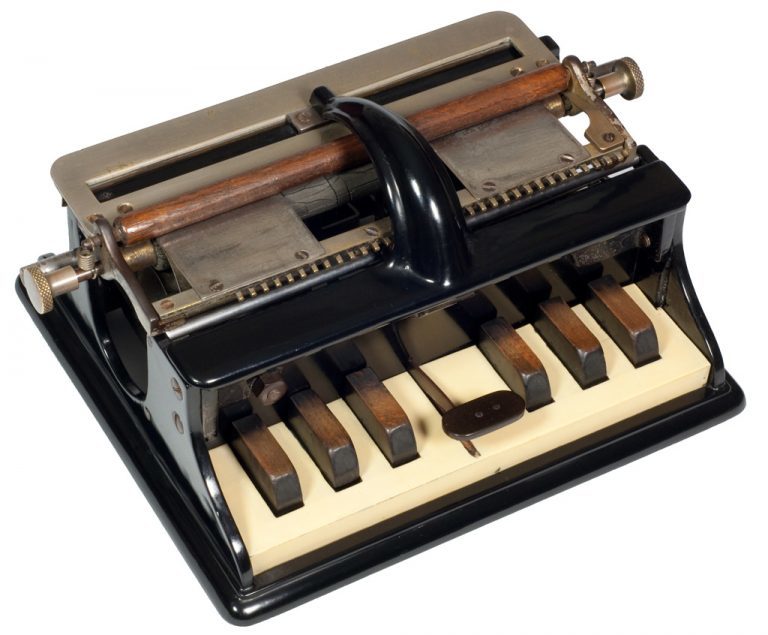Dublin Core
Title
Book: "Frank H. Hall and His Braille Writer: A Souvenir Publication of the Frank Hall Diamond Jubilee, June 8, 1968" by Walter B. Hendrickson, Illinois Department of Children and Family Services.
Subject
[no text]
Description
“It was clear, cold, and quiet on the morning of January 5, 1893, when a man of medium height and vigorous physique, bright-eyed and bespectacled, his face adorned with a soup-strainer moustache and a small goatee, jumped lightly from the Chicago and Alton train that pulled into Jacksonville, Illinois, from Chicago, and hurried forward to supervise the unloading of a large wooden box onto a wagon. He climbed up beside the driver, and the horses hauled the rattling vehicle a couple of hundred yards eastward across the railroad tracks and pulled into the rear of the main building of the Illinois Institution for the Education of the Blind. The box was unpacked and the contents set up in the office of the man, who now had his greatcoat off and appeared in a high stiff collar, black tie and black frock coat. This man was Frank Haven Hall, superintendent of the institution.”
“Out of the box came a machine that operated some- what like a typewriter. It had six keys, much like those of a piano, and a single oval spacing key between two groups of three keys. Each key controlled a punch that made one of the dots in a braille cell. At the back of the machine and attached to it in a vertical position - where, in a type- writer, the paper would be inserted - was a metal frame about 15 inches square. The machine was mounted on a waist-high pedestal, and extending downward was a single foot pedal. By pressing the keys, and stepping on the foot pedal, the dots of the braille letters were impressed on a thin brass sheet held in the upright frame. The resulting embossed plate was put into a hand press, a dampened piece of paper was placed over the plate, pressure was applied, and the braille characters were transferred to the paper. Thousands of copies could be made -- no fuss, no muss, no type, no hot lead. Frank Hall, whose brainchild 1 this machine was, put a plate in the carriage and tapped out four lines of the first verse of the hymn, ‘Blest be the Tie that Binds.’ “ Source: "Frank H. Hall and His Braille Writer: A Souvenir Publication of the Frank Hall Diamond Jubilee, June 8, 1968" by Walter B. Hendrickson, Illinois Department of Children and Family Services.
“Out of the box came a machine that operated some- what like a typewriter. It had six keys, much like those of a piano, and a single oval spacing key between two groups of three keys. Each key controlled a punch that made one of the dots in a braille cell. At the back of the machine and attached to it in a vertical position - where, in a type- writer, the paper would be inserted - was a metal frame about 15 inches square. The machine was mounted on a waist-high pedestal, and extending downward was a single foot pedal. By pressing the keys, and stepping on the foot pedal, the dots of the braille letters were impressed on a thin brass sheet held in the upright frame. The resulting embossed plate was put into a hand press, a dampened piece of paper was placed over the plate, pressure was applied, and the braille characters were transferred to the paper. Thousands of copies could be made -- no fuss, no muss, no type, no hot lead. Frank Hall, whose brainchild 1 this machine was, put a plate in the carriage and tapped out four lines of the first verse of the hymn, ‘Blest be the Tie that Binds.’ “ Source: "Frank H. Hall and His Braille Writer: A Souvenir Publication of the Frank Hall Diamond Jubilee, June 8, 1968" by Walter B. Hendrickson, Illinois Department of Children and Family Services.
Identifier
[no text]
Date
[no text]
Creator
Lisa
Language
[no text]
Rights
[no text]
Format
[no text]
Relation
[no text]
Source
[no text]
Publisher
[no text]
Contributor
Photo courtesy of https://www.antiquetypewriters.com/typewriter/hall-braille-writer-1/
Type
[no text]
Coverage
[no text]


